Have you ever taken a step back and wondered if the glossy shine of your car is hiding a secret beneath layers of worn clear coat? I recently faced this very question when dealing with an over-polished Jeep boasting a troubled finish. Embarking on this journey, I discovered not only the mechanics of paint restoration but an unexpected array of solutions, each with its own promise of a pristine finish. As a former Jeep engineer turned journalist, I’ve encountered my fair share of automotive challenges; yet, tackling the removal of clear coat was an eye-opener in understanding paint finishes at their core. Just as a master craftsman selects their tools wisely, identifying the best method to remove a clear coat is essential for preserving the soul of your vehicle. In this article, I delve into what truly worked best—and why some methods are simply more effective than others.
Understanding Clear Coat
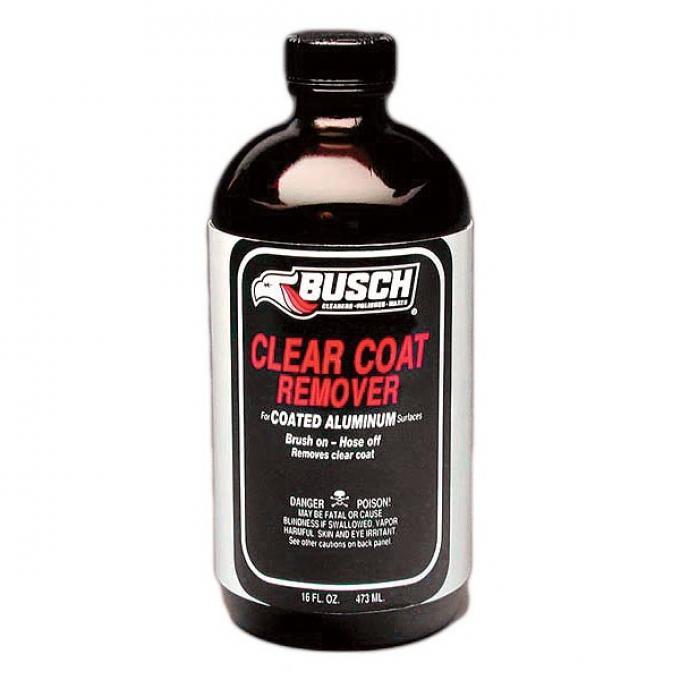
During my years as an engineer, I learned that understanding clear coat is crucial not just for aesthetic reasons but for preserving the integrity of your vehicle’s paint job. It’s one of those things that, if done right, ensures longevity and brilliance for your car’s appearance. Did you know that most factory finishes rely on a clear coat to protect the base paint from UV damage? This fascinating shield acts as the frontline barrier against the harsh environment, preserving the vibrant colors beneath while maintaining that showroom shine.
Years ago, I ran into a situation where an improper application led to disastrously dull results—a memory that has stayed with me as a cautionary tale. While clear coat adds gloss and protects, it can be a double-edged sword when things go awry. If you’re diving into DIY maintenance, like I did, understanding the role of the clear coat can save you countless headaches. Having possibly been there myself, I know the frustration and regret when things don’t pan out as planned.
This foundational knowledge doesn’t just provide aesthetic dividends; it’s about safeguarding your investment. It prepares you for tackling the daunting process of removal or replacement, which, as I will explain further, requires a meticulous approach and respect for the art of automotive care.
Why Remove Clear Coat?
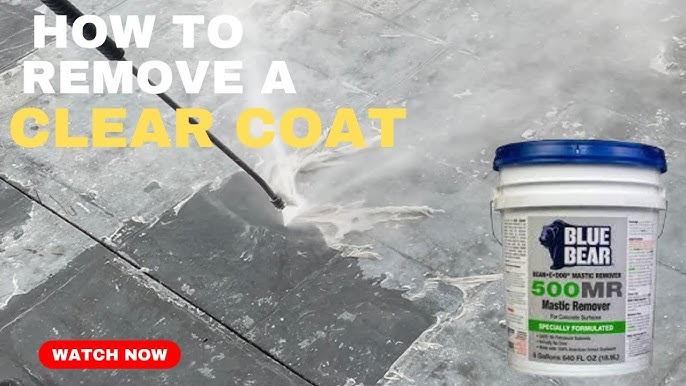
I’ve seen countless vehicles suffer from neglected clear coats. The once gleaming surfaces become dulled and inexorably marred. What happens if you ignore that peeling or blotchy clear coat on your car? Through experience, I’ve learned it’s not merely a cosmetic issue—it’s a protective concern that can’t be overlooked.
Years ago, a coworker of mine drove in what appeared to be a pristine vehicle. It wasn’t until an unexpected storm unveiled massive peeling beneath the surface that the reality hit—his clear coat had been silently deteriorating over time. That experience reinforced to me the importance of addressing problematic clear coats promptly. If left unchecked, the compromised layer risks exposing the underlying paint to environmental hazards such as UV rays, moisture, and oxidation, further accelerating the damage.
Removing a damaged clear coat not only safeguards your car’s exterior but also restores its aesthetic appeal. It’s fascinating how the paint’s depth and vibrancy can completely revive once that peeling sentinel is stripped away. Routine checks and addressing these issues head-on can prevent costly repairs and maintain your car’s value. My firsthand encounters have taught me that intervening early is key to preserving your vehicle’s integrity.
Who Should Consider Clear Coat Removal?
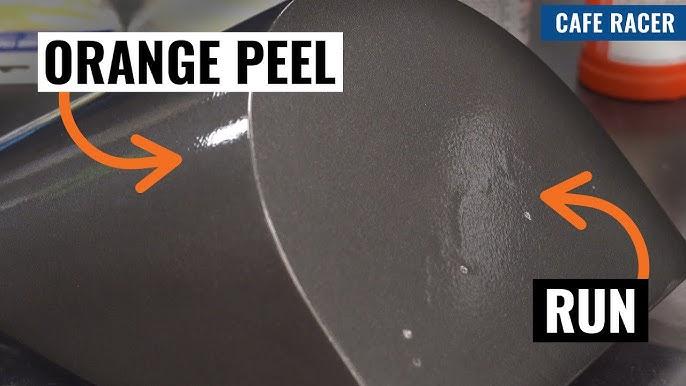
Are you a DIY enthusiast or a professional detailer looking to level up your skills? If so, the realm of clear coat removal beckons you. As someone who has danced across the spectrum of automotive detailing—from restoring forgotten relics to refining everyday rides—I can truly say that dabbling in clear coat removal offers an excellent adventure in both education and artistry.
In the beginning, my journey was driven by the desire to resurrect the old, faded paint of a classic beauty I rescued from a junkyard. It was through this challenge that I unearthed profound insights about automotive finishes—insights I hadn’t anticipated discovering. Whether it is the weekend warrior working on a personal project or a seasoned detailer looking to offer refined services, removing a clear coat demands both attention to detail and a love for the craft. The process is not simply about technique; it’s about bringing a deeper aesthetic vision to life.
Clear coat removal is for anyone looking to dive deeper into car restoration, aiming to achieve a pristine finish or experimenting with custom paint jobs. Each stroke educates, each layer peels back history, revealing the potential for stunning transformation beneath. This is why both the DIY community and professional circles have much to gain from mastering this skill set.
When to Remove Clear Coat?
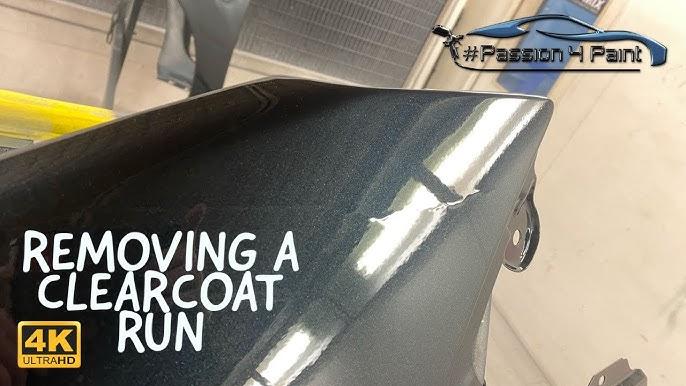
When I first considered removing the clear coat on my old truck, I hesitated, thinking it could last just one more season. It was a costly mistake that taught me an important lesson about timing. How can you tell it’s time to strip that clear coat off your vehicle? Recognizing the signs early can save you from extensive restoration down the line.
The moment I noticed the clear coat on my truck starting to peel and flake was my first wake-up call. I had seen this before, but my procrastination only made things worse. You might see areas where the paint appears dull, or notice spots gradually expanding. These are signs that the clear coat is compromised, making it vulnerable to further damage from elements like UV rays, moisture, and chemical pollutants.
It’s not just about appearances; if left unattended, issues like oxidation can start affecting the underlying paint, pushing your restoration costs higher. As someone who’s experienced this complexity first-hand, I can tell you: the sooner you act, the easier your workload will be. Detecting early signs and knowing when to tackle clear coat removal means less headache and a smoother process later on. Trust me, it’s far better to deal with a manageable situation than to face a full-blown repair emergency.
How to Remove Clear Coat Effectively
Preparation for Clear Coat Removal
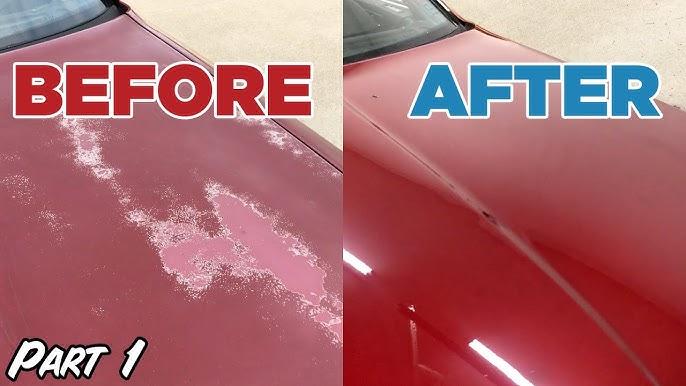
Is your workspace ready for the clear coat removal process? When I first ventured into car paint repair, I quickly learned the significance of a well-prepared environment. Overlooking my workspace setup led to a less-than-stellar outcome, a mistake I wouldn’t repeat. Proper preparation is the foundation of effective automotive detailing. Setting up a clean, organized area not only facilitates access to the right tools but also minimizes contamination risks that could compromise the finish. A dust-free, well-lit garage or outdoor space is ideal, allowing you to see your progress and avoid potential mishaps.
Furthermore, equipping yourself with the necessary tools—high-quality sandpaper, polishers, and protective gear—ensures you’re ready for each step. By investing time in preparation, you lay the groundwork for a smoother, more successful clear coat removal process. This meticulous approach transforms a daunting task into an achievable project, enhancing your confidence and expertise in car care.
Techniques for Removing Clear Coat
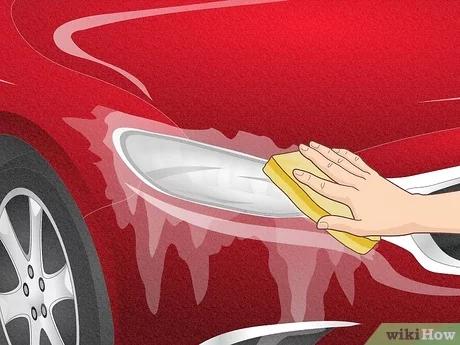
What techniques can help you effectively restore your vehicle’s paint? This question drove my quest for a reliable method to remove my car’s clear coat. Through various experiments, I discovered that sanding is often the most effective approach. I’ve learned that patience is not just a virtue but a necessity in this process. During one hasty attempt, I caused more damage than I anticipated, reinforcing the mantra that slow and steady wins this race.
Starting with wet sanding, I used a fine-grit sandpaper—initially 1500, then gradually moving to 2000 grit. This method of removing car clear coat requires meticulous care. I frequently rinsed the sandpaper to prevent build-up, maintaining a controlled pressure to avoid reaching the paint prematurely. The process emphasized the importance of precision. Watching the clear coat gradually fade away was rewarding, knowing my dedication and care preserved the underlying paint.
Beyond sanding, I experimented with chemical strippers and buffers, yet consistently returned to sanding as the most reliable solution. Each method has its merits, but sanding allowed me to maintain control and achieve an even result. This hands-on insight transformed my approach and underscored that mastering this technique can truly enhance your vehicle’s appearance. Once the clear coat was removed, the paint restoration phase became ever so satisfying. These learned skills bolstered my confidence in tackling future automotive projects, ensuring I treat each task with the necessary competence and care.
Aftercare and Paint Restoration
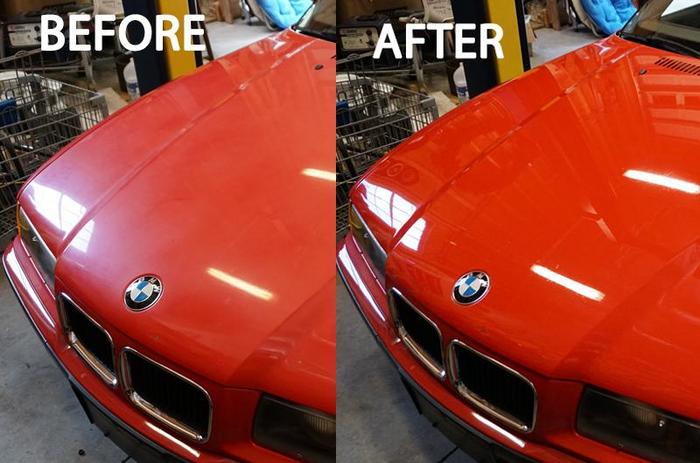
What steps do you need to take to restore your vehicle’s shine after removing the clear coat? After spending hours carefully removing the old, damaged layer, I learned that paint restoration is crucial for bringing the vehicle’s exterior back to life. Think of it as the icing on the cake for your hard work. After restoring my own Jeep, I realized how important aftercare is. The moment the clear coat was gone, my focus promptly shifted to revitalizing the paint and preserving its luster. This process didn’t just involve applying a generic wax; it demanded a particular knack for using a high-quality polish.
To kick things off, I meticulously cleaned the surface to remove any residue from the clear coat removal process. Next, using a polish I swore by, I meticulously buffed it into the paint, and the results were nothing short of astounding—making the surface gleam better than new. Understanding these nuances transforms a daunting task into a rewarding experience. This clear coat fix technique not only accentuates the depth of the paint but also ensures long-term protection against environmental stressors. Hence, aftercare isn’t just a finishing touch; it’s an essential step in maintaining your vehicle’s brilliance.
FAQs
What is the best method to safely remove clear coat from my car?
The best method to safely remove clear coat from your car involves using a fine-grit sandpaper followed by a polish and buffing process. This minimizes damage to the paint and ensures a smooth finish.
What tools do I need to remove the clear coat effectively?
To remove the clear coat effectively, you will need fine-grit sandpaper, a dual-action polisher, polishing compound, microfiber towels, and a buffing pad.
How long does it take to remove clear coat from a car?
The time required to remove the clear coat can vary based on the size of the area and the method used, but typically it can take anywhere from a few hours to a full day to complete the process properly.
Can removing the clear coat damage my car’s paint?
Yes, if not done carefully, removing the clear coat can damage your car’s paint. It is essential to follow proper techniques and use appropriate tools to minimize risk.
Is it necessary to remove the clear coat before repainting?
While it is not always necessary to remove the clear coat before repainting, doing so can lead to better adhesion and a more uniform finish. It is often recommended for optimal results.
Conclusion
Reflecting on my journey of clear coat removal, I realize the immense value in truly understanding your vehicle’s intricacies. What have you learned from the journey of clear coat removal? It’s more than just a task—it’s a transformation, both of the car and of oneself. The process taught me that effective cloudy clear coat solutions stem from patience and precision. I discovered that the best clear coat fix requires the right tools and techniques. Through trials, including a few setbacks, I honed my skills and deepened my connection with my car and the community of fellow auto enthusiasts. In choosing the appropriate techniques and aftercare, I not only revived the car’s surface but also enriched my car care knowledge. This experience underscored the profound impact of DIY auto maintenance—revealing that sometimes, the journey itself is the path to mastery and sharing that passion with others is the ultimate reward.